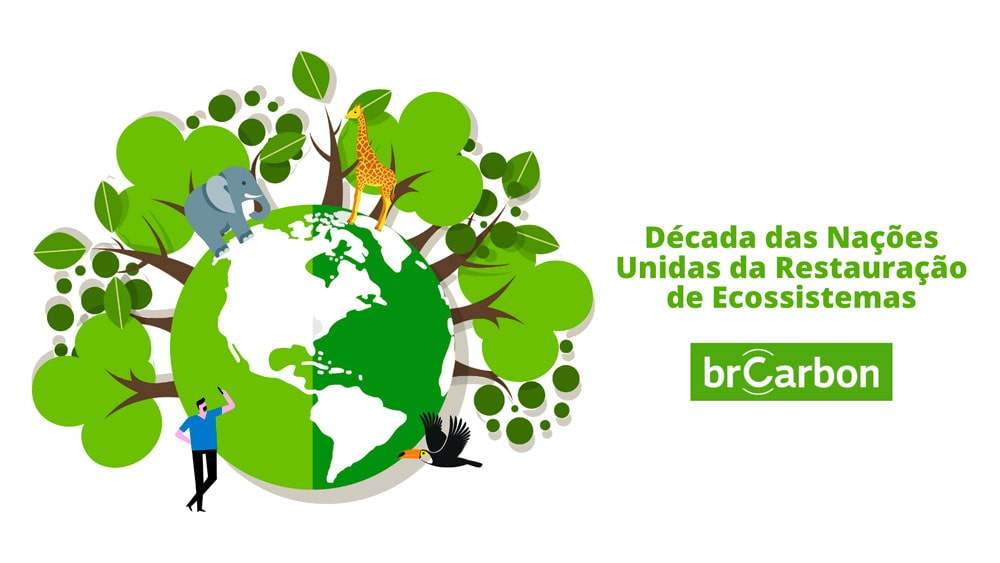Humanity has already exceeded the amount of services that nature can sustainably provide by almost 60%, according to the latest report by the United Nations Environment Program (UNEP) and the United Nations Food and Agriculture Organization (FAO) . To reverse this dramatic picture, the UN launched the United Nations Decade of Ecosystem Restoration (2021/2030).
 See how far we have reached with the overexploitation of ecosystems:
See how far we have reached with the overexploitation of ecosystems:
- Land degradation affects nearly 2 billion hectares (an area larger than South America) and harms the well-being of 3.2 billion people, around 40% of humanity.
- Over the next 25 years, land degradation could reduce global food productivity by up to 12%, leading to a 30% increase in world food prices.
- In the last century, half of all wetlands on the planet have been destroyed.
- Almost 50% of coral reefs have already been lost and up to 90% could be lost by 2050.
(Source: ONU)
 And the harm that this brings:
And the harm that this brings:
- Each year, the world loses ecosystem services that are worth more than 10% of global economic output.
- Every three seconds, the world loses enough forest area to cover a football field. Each year, there are 10 million hectares, an area equivalent to the size of Iceland – with this, 12% to 20% of global CO₂ emissions are not absorbed by the forest and are released into the atmosphere.
(Source: ONU)
Investing in restoration is a smart economic decision. Restoring degraded areas creates jobs, rebuilds livelihoods, removes carbon from the atmosphere, mitigates climate change, restores nature’s defenses against extreme weather events and disasters, and recreates a natural protection against zoonotic diseases. Furthermore, according to the UN, it accelerates progress on all 17 Sustainable Development Goals.
 Check out some examples of what restoration can provide:
Check out some examples of what restoration can provide:
- Restoring 350 million hectares of degraded land by 2030 (an area the size of India) could reverse the presence of between 13 and 26 gigatonnes of greenhouse gases in the atmosphere.
- Combined with halting new conversions of natural ecosystems, restoration could help prevent 60% of predicted biodiversity extinctions.
- Emerging business opportunities across nature could create 191 million jobs by 2030.
(Source: ONU)
To address the triple threat of climate change, loss of nature and pollution, the report recommends restoring at least 1 billion degraded hectares of land over the next decade (an area the size of China). The overall costs of this restoration – not including the costs of restoring marine ecosystems – are estimated to be at least US$ 200 billion a year through 2030. However, according to the report, countries spend between US$ 4 to 6 trillion a year in subsidies for activities that harm the environment.
The UN Secretary General, António Guterres, recognizes that “the task is colossal”. But he points out that it will help eliminate poverty and hunger, creating millions of new jobs and generating a return of more than US$ 7 billion each year through 2030.
The #RestorationGeneration movement can directly benefit Brazil. With an important share of reforestation, soil management and agriculture, the country concentrates 20% of global opportunities in Nature Based Solutions (NbS), which are measures and actions that aim to use ecosystem services to solve environmental problems , social and economic.
Invest in ecosystem recovery. Do the math:
- Restoring 350 million hectares of degraded land by 2030 could generate US$ 9 trillion in ecosystem services.
- Restoring degraded land can generate an extra US$ 1.4 trillion in agricultural production each year.
- For every dollar invested in restoration, you can expect anywhere from US$ 7 to US$ 30 in return to society.
(Source: ONU)




After I initially commented I seem to have clicked the -Notify me when new comments are added- checkbox and now each time a comment is added I receive 4 emails with the exact same
comment. There has to be a way you can remove me from that service?
Cheers!
I’m gone to tell my little brother, that he should also visit
this blog on regular basis to take updated from latest reports.
My brother recommended I might like this website.
He was totally right. This post actually made my day.
You cann’t imagine simply how much time I had spent for this info!
Thanks!
Hello there I am so delighted I found your blog, I really found you
by mistake, while I was researching on Google for something
else, Nonetheless I am here now and would just like to say thank you for a incredible post and a all round enjoyable blog (I also love the theme/design), I don’t have time to look over it all at the moment but I have saved it and also included
your RSS feeds, so when I have time I will be back to read a great
deal more, Please do keep up the fantastic jo.
Very good article! We will be linking to this particularly great content on our site.
Keep up the good writing.
$220/day – Shopify Assistant Job . A number of Shopify stores on our platform are hiring new live chat operators to respond to customer live chat messages on their Shopify stores. These jobs are open for application worldwide, with strong demand for new workers from English Speaking countries. See the complete details here : http://chat-assistant.advertising4you.co.uk